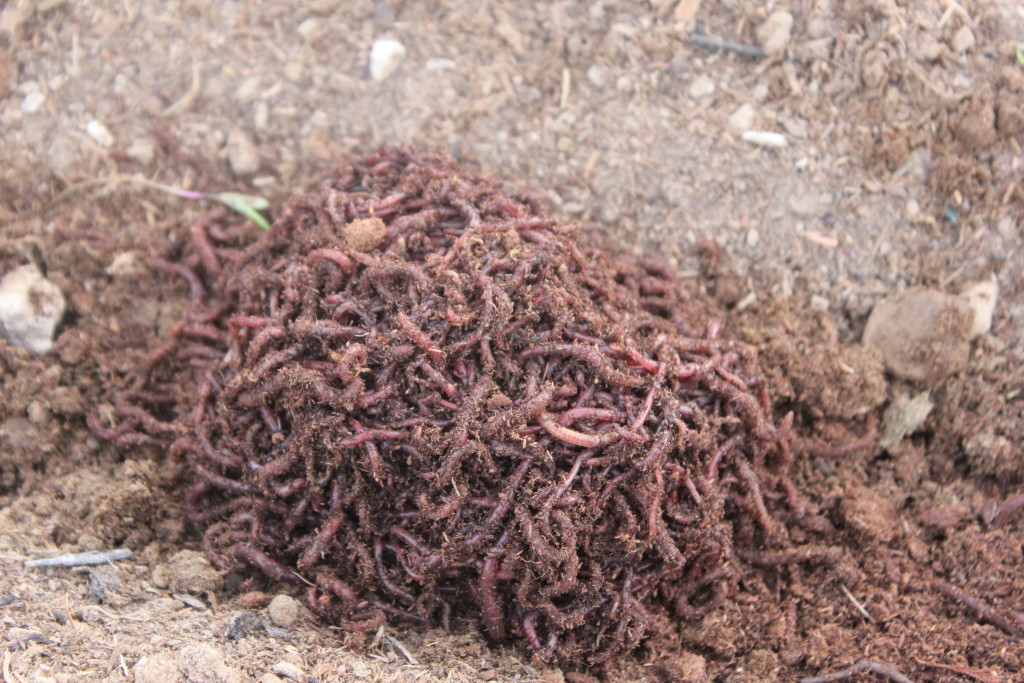Back in March I stared a garden bed in which I was going to experiment with composting in place. You can read more about it: here. So far things are going well. From my investigating and poking around it seems like everything is breaking down nicely, although a bit slowly. I decided to give it a little help in the form of red wiggler worms.
Yes worms, did you know that you can buy worms by the pound? Yes you can, and I have, many times before and I have been so happy with the results of adding worms to my compost, thereby adding fertility to my soil.
Part of having fertile soil is protecting, maintaining and facilitating a whole ecosystem under the surface. All those little microorganisms, bugs, grubs and worms work together breaking down organic matter and turning it into nutrients that plants can use. Soil devoid of this secret ecosystem cannot optimally support life.
Worms are an irreplaceable piece in this puzzle.
Red worms in a natural ecosystem feed in the leaf litter — the surface of the soil that contains dead plants, leaves and animal remains. As red worms gorge on decomposing matter, they leave behind castings — excrement or fecal matter — that is highly concentrated in nitrogen, phosphorus and potassium. All of these are important nutrients that fertilize living plants. During the feeding and decomposing process, red worms help aerate the soil, creating pockets of air that allow for water and nutrients to flow more easily among plant roots.

Adding worms to the garden or compost is quite easy, you just dig a little hole or create a small trench, add the worms and cover, then water in well. The worms will soak up the water and become active, eating everything and pooping a lot, helping the garden to grow.
[amazonjs asin=”B001ONZIWM” locale=”US” title=”Uncle Jim’s Worm Farm 2000 Count Red Wiggler Worms”]
